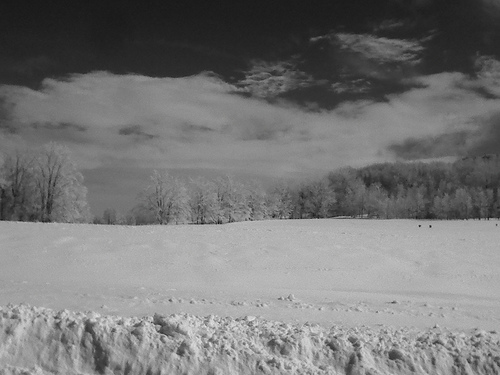
Even though the polar vortex is gone, there is a lot of winter left this season. Here are some suggestions for protecting your camera gear and film from the cold temperatures ahead.
Suddenly exposing cold gear to warmer temperatures will cause moisture in the air to condense on all the metal parts, sensors, and electronics on the inside and outside of cameras and lenses. Sure, you can wipe down the outside, but on the delicate inside parts, it can lead to mold growth and promote corrosion. Even weather-sealed cameras are vulnerable. Try bundling your cameras and lenses in air-tight plastic bags before taking them inside; the water will still condense, but on the outside of the bag. Make sure all the air is squeezed out before sealing, just like packing a snack for lunch. Don’t open the bag until the condensation has started to dissipate from the outside of the plastic. Silica packs, like the kind in the box of a new pair of shoes or sold in camera stores, can help absorb moisture and keep gear dry, so throw a few of those in the bag for good measure. If condensation does form on the camera body, remove the battery and allow the gear to dry out before using or taking back out into cold temps, as the condensation could freeze with disastrous results.
The best approach to reduce problems associated with extreme cold is to keep gear warmer than the ambient air. Since you’re already wearing an insulating coat, keep your camera in there between shoots and put it back before it has a chance to cool off. Throwing a hand-warmer in your bag works pretty well, too. However, if the camera ends up getting cold before you stick it back in your warm jacket or bag, condensation can form.
Besides condensation, temperature changes can make plastic parts brittle and metal shrink or expand. You also want to take it slow when rewinding manual cameras, as the cold can make film brittle, and dry winter air can cause static electricity. For those of us still using instant film, you’ll notice that development will slow as temperatures drop and accelerate as they rise, so adjust times accordingly, likely requiring a little trial and error.
I hope these cold weather tips help! If you have additional suggestions for protecting gear from winter weather, please let us know in the comments.